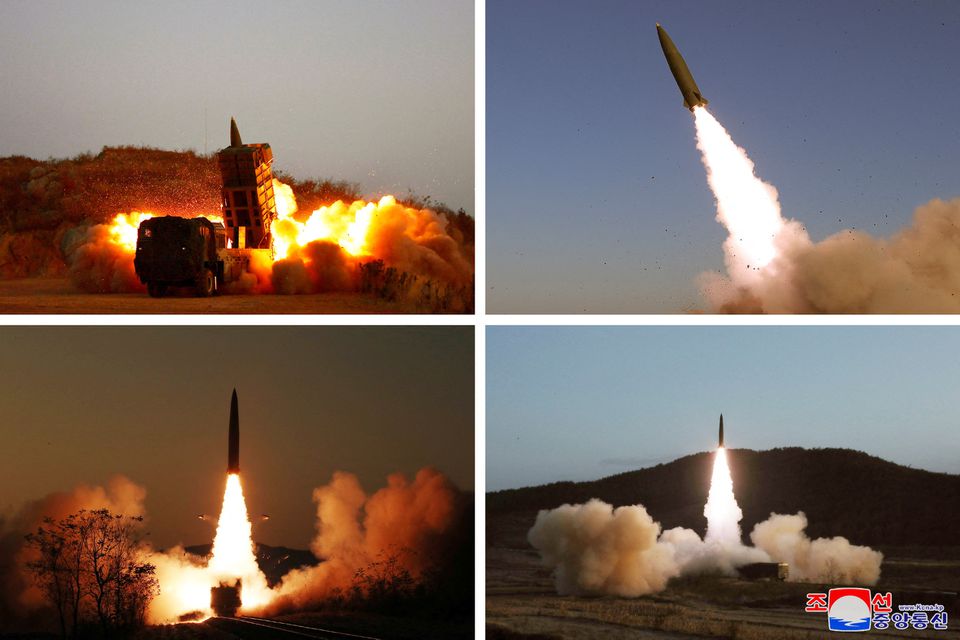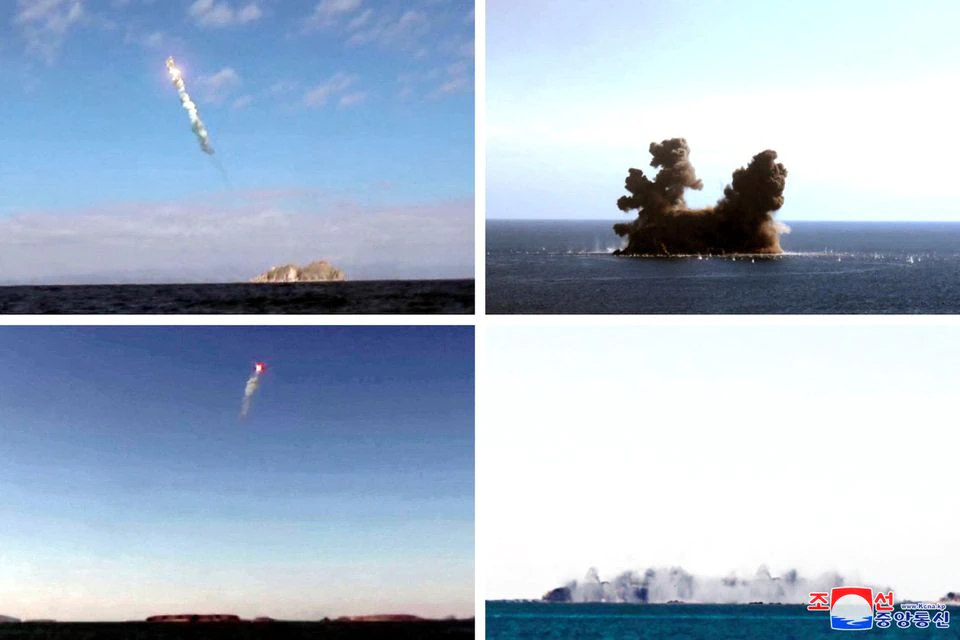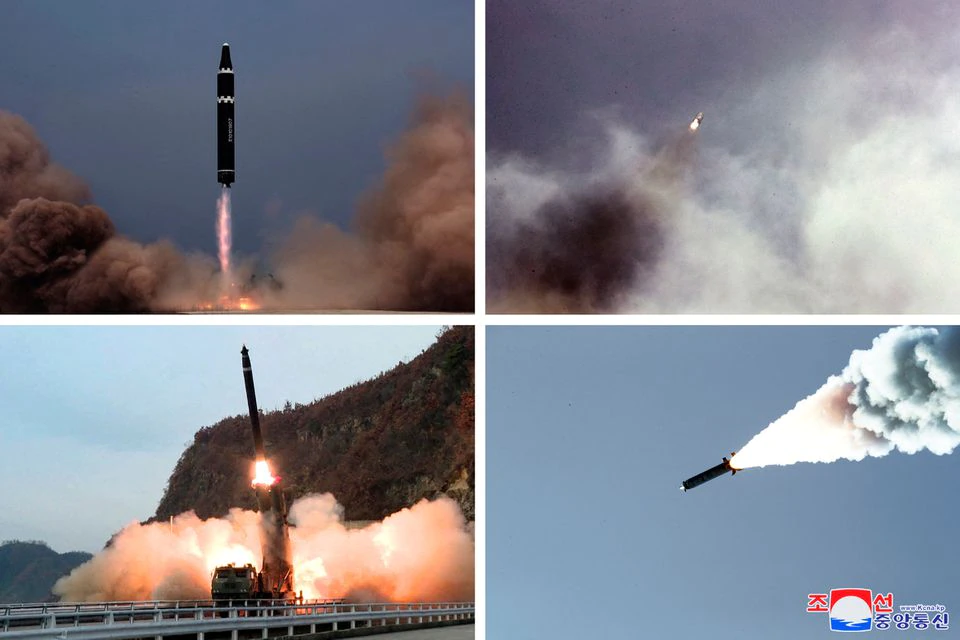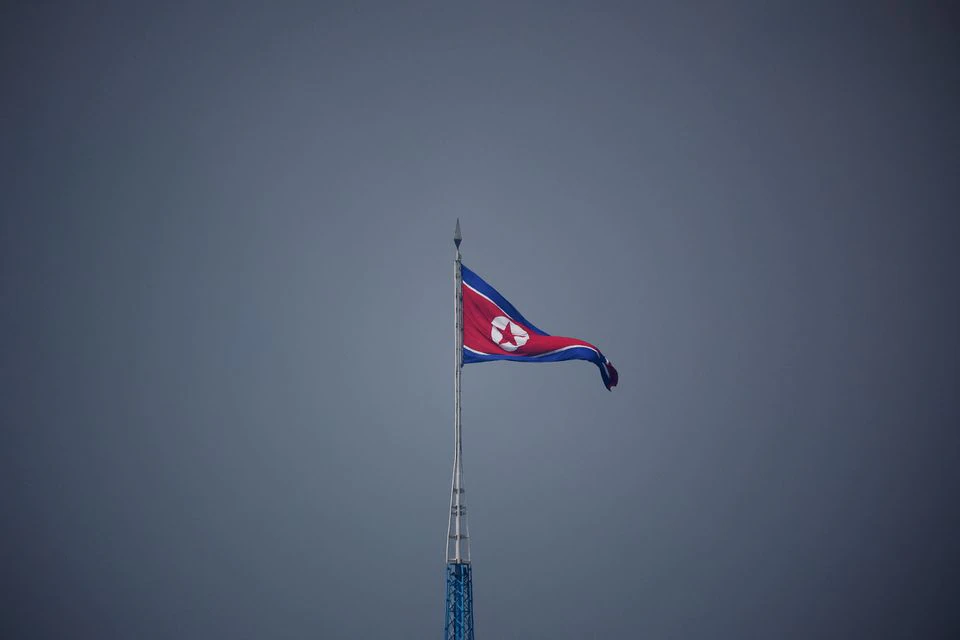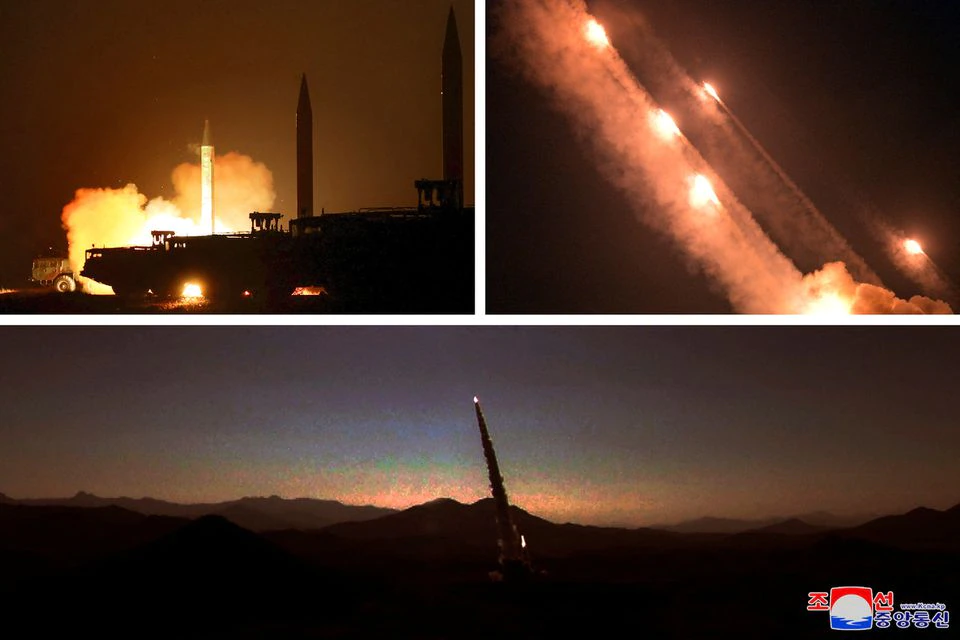North Korea says dispatches missiles were reenacted assault as South recuperates missile parts.
North Korea says dispatches missiles. North Korea said on Monday that its new missile dispatches mimicked strikes on South Korea and the U.S. as the two nations held a “hazardous conflict drill,” while the South said it had recuperated pieces of a North Korean missile close to its coast.
Last week, North Korea test-discharged numerous missiles, including a potentially bombed intercontinental long-range missile (ICBM) and many cannons shells into the ocean, as South Korea and the U.S. completed six-day air bores that finished on Saturday.
The North’s military said the “Cautious Tempest” practices were an “open incitement focused on purposefully heightening the pressure” and “a risky conflict drill of exceptionally high forceful nature.”
The North’s military said it had directed exercises mimicking assaults on air bases and airplanes and a significant South Korean city to “crush the foes’ determined conflict madness.”
The whirlwind of rocket dispatches incorporated the most ridiculous in a solitary day. It came during a record year of rocket testing by atomic-equipped North Korea.
South Korean and U.S. authorities have likewise said that Pyongyang has made specialized arrangements to test an atomic gadget, whenever it first did such beginning around 2017.
Senior representatives from the U.S., Japan, and South Korea talked by telephone on Sunday. They criticized the new tests, including the “wild” send-off of a rocket that arrived off South Korea’s coast last week, per a U.S. State Office explanation.
An authority at South Korea’s Joint Heads of Staff said on Monday that a South Korean boat had recuperated garbage accepted to be essential for that North Korean short-range, long-range rocket (SRBM). It was whenever a North Korean long-range missile arrived close to South Korean waters.
The authority said that the South Korean Naval force salvage vessel utilized a submerged test to recuperate the parts being examined.
Table of Contents
Questioned Cases
The North Korean military said it terminated two “vital” journey rockets on Nov. 2 toward the waters off South Korea’s Ulsan, the southeastern beachfront city lodging a thermal energy station and enormous production line parks.
South Korean authorities called that case “false” and said they had followed no rockets nearby.
Examiners expressed a portion of the photographs delivered by North Korean state media appeared to be reused from dispatches before in the year.
The tasks likewise incorporated a send-off of two “strategic long-range rockets stacked with scattering warheads,” a trial of an “extraordinary utilitarian warhead deadening the activity order arrangement of the foe,” and a “hard and fast battle foray” including 500 warrior jets, as per an assertion conveyed by the authority KCNA news organization.
Five hundred warriors would address pretty much every devoted battle airplane in the North’s stock, which appears to be far-fetched given many are 40-80-year-old airframes and not all are useful or kept in the dynamic armada, said Joseph Dempsey, a guard scientist at the Global Foundation for Vital Examinations.
“(The) 500 figure appears to be misrepresented or, if nothing else, misdirecting,” he said in a post on Twitter.
The General Staff of the North’s Korean Individuals’ Military (KPA) blamed Seoul and Washington for inspiring a “more unsteady showdown” and promised to counter their drills with “maintained steadfast and overpowering down-to-earth military measures.”
“The more tenaciously the foes’ provocative military moves proceed, the more completely and pitilessly the KPA will counter them,” it said in the explanation.
NEW MISSILE?
Investigators said that the photographs delivered by state media seemed to show a formerly unreported new sort or variation of ICBM.
“It’s not unequivocal in their assertion, but rather the plan doesn’t compare to one we’ve seen previously,” said Ankit Panda, a rocket master at the Carnegie Gift for Worldwide Harmony.
He said the send-off shown may have been a formative stage for assessing rocket subsystems, including perhaps a vehicle for various freely targetable reemergence vehicles (MIRVs), which permit a solitary rocket to drop atomic warheads on multiple targets.
“This is most certainly an ICBM-size rocket,” Panda said.
George William Herbert, an assistant lecturer at the Middle for Limitation Review and a missile specialist, said the pictures showed what had all the earmarks of being a new nosecone on North Korea’s Hwasong-15 ICBM, which was first tried in 2017.
The nosecone has an alternate shape and seems more significant than needed for the 200-to 300-kiloton atomic gadget displayed in state media and tried in 2017, he said.
Herbert said the shape is more appropriate for a solitary enormous warhead than different, more modest warheads like a MIRV.
Kim has required the advancement of both bigger atomic warheads and more modest ones, which could be utilized in MIRVs or for strategic weapons.
READ: Iran provides drones to Russia as the war against Ukraine continues


